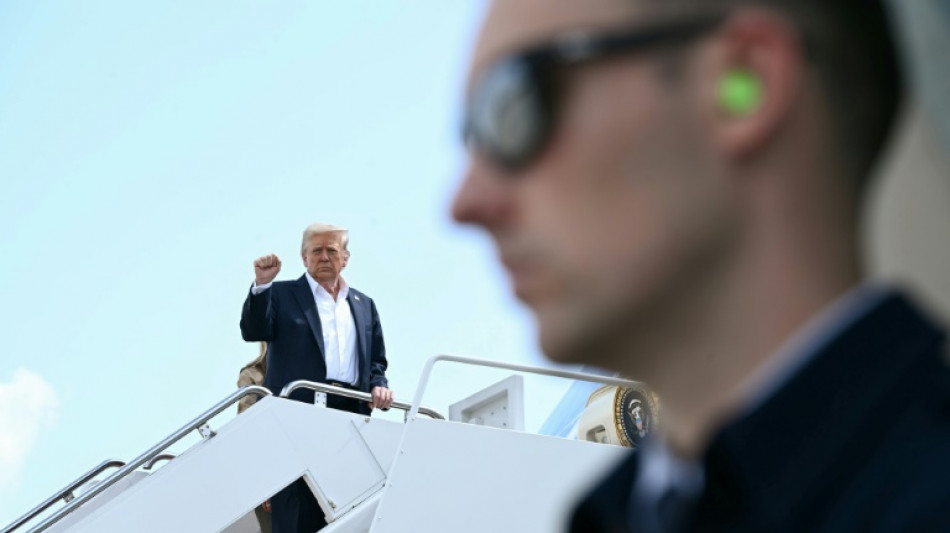
SCS
0.0200

US President Donald Trump flew to Texas Friday as questions swirled over the authorities' response to flash floods that have left at least 120 people dead, including dozens of children.
The Republican leader and First Lady Melania Trump boarded Air Force One en route to a meeting with first responders, families and local officials in the Hill Country of central Texas, a week after heavy rainfall and an overflowing river swept away houses, camp cabins, recreational vehicles and people.
They were due around midday in Kerrville, a city in the worst-affected Kerr County where at least 96 people are confirmed dead from the historic flooding.
"We're going to be there with some of the great families" of flood victims, Trump told reporters before leaving the White House, calling the disaster a "terrible thing."
The search for more than 170 missing people, including five girls who were at summer camp, entered the eighth day as rescue teams combed through mounds of debris and mud.
But with no live rescues reported this week, worries have swelled that the death toll could still rise.
Trump has brushed off questions about the impact of his cuts to federal agencies on the response to the flood, which he described as a "100-year catastrophe" that "nobody expected."
On Thursday, Homeland Security Department head Kristi Noem defended the immediate response as "swift and efficient."
Later that day, with Texas officials facing questions about why emergency evacuation messages to residents and visitors along the flooding Guadalupe River reportedly were delayed, in some cases by several hours, Trump expressed support for a flood warning system.
"After having seen this horrible event, I would imagine you'd put alarms up in some form, where alarms would go up if they see any large amounts of water or whatever it is," Trump told NBC News in a telephone interview.
"But the local officials were hit by this just like everybody else," he said.
- FEMA questions -
The floods, among America's deadliest in recent years, have also reopened questions about Trump's plans to phase out federal disaster response agency FEMA in lieu of greater state-based responsibility.
FEMA began its response to the Texas flash floods over the weekend after Trump signed a major disaster declaration to release federal resources.
But the president has so far avoided addressing questions about its future. Noem insisted FEMA should be "eliminated" in its current form at a government review meeting Wednesday.
Officials in Kerr County, which sits astride the Guadalupe River in an area nicknamed "Flash Flood Alley," said at least 36 children were killed in the disaster at the start of the Fourth of July holiday weekend.
Details have surfaced about reported delays of early alerts at a local level that could have saved lives.
Experts say forecasters did their best and sent out timely and accurate warnings despite the sudden weather change.
Kerr County Sheriff Larry Leitha said "it was between 4:00 or 5:00 (am) when I got notified" of incoming emergency calls.
ABC News reported Thursday that at 4:22 am on July 4, a firefighter in Ingram, upstream of Kerrville, had asked the Kerr County Sheriff's Office to alert residents of nearby Hunt to the coming flood.
The network said its affiliate KSAT obtained audio of the call, and that the first alert did not reach Kerr County's CodeRED system for a full 90 minutes.
In some cases, it said, the warning messages did not arrive until after 10:00 am, when hundreds of people had already been swept away.
The flooding of the Guadalupe River was particularly devastating for summer camps on its banks, including Camp Mystic, where 27 girls and counselors died.
E.Soukup--TPP